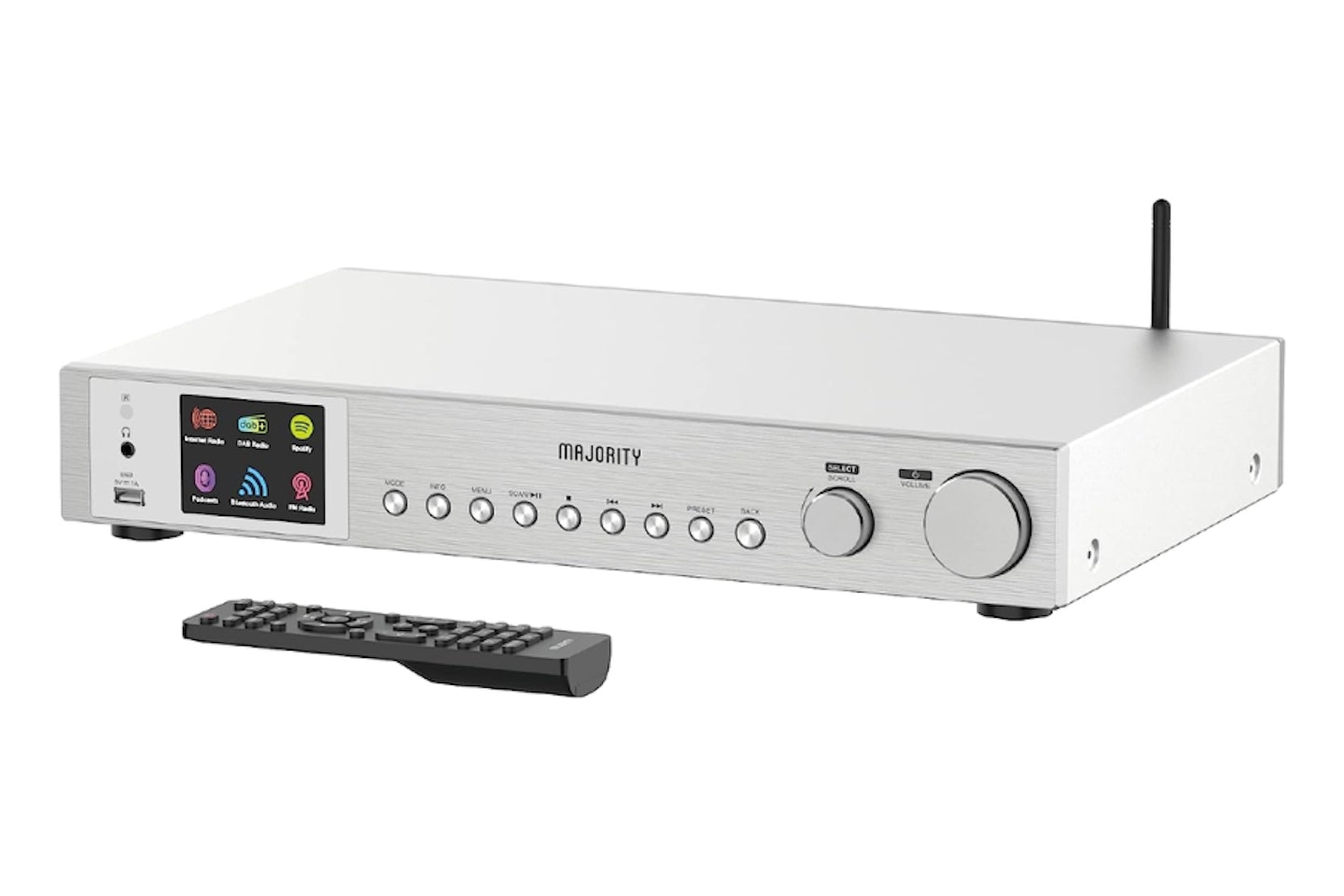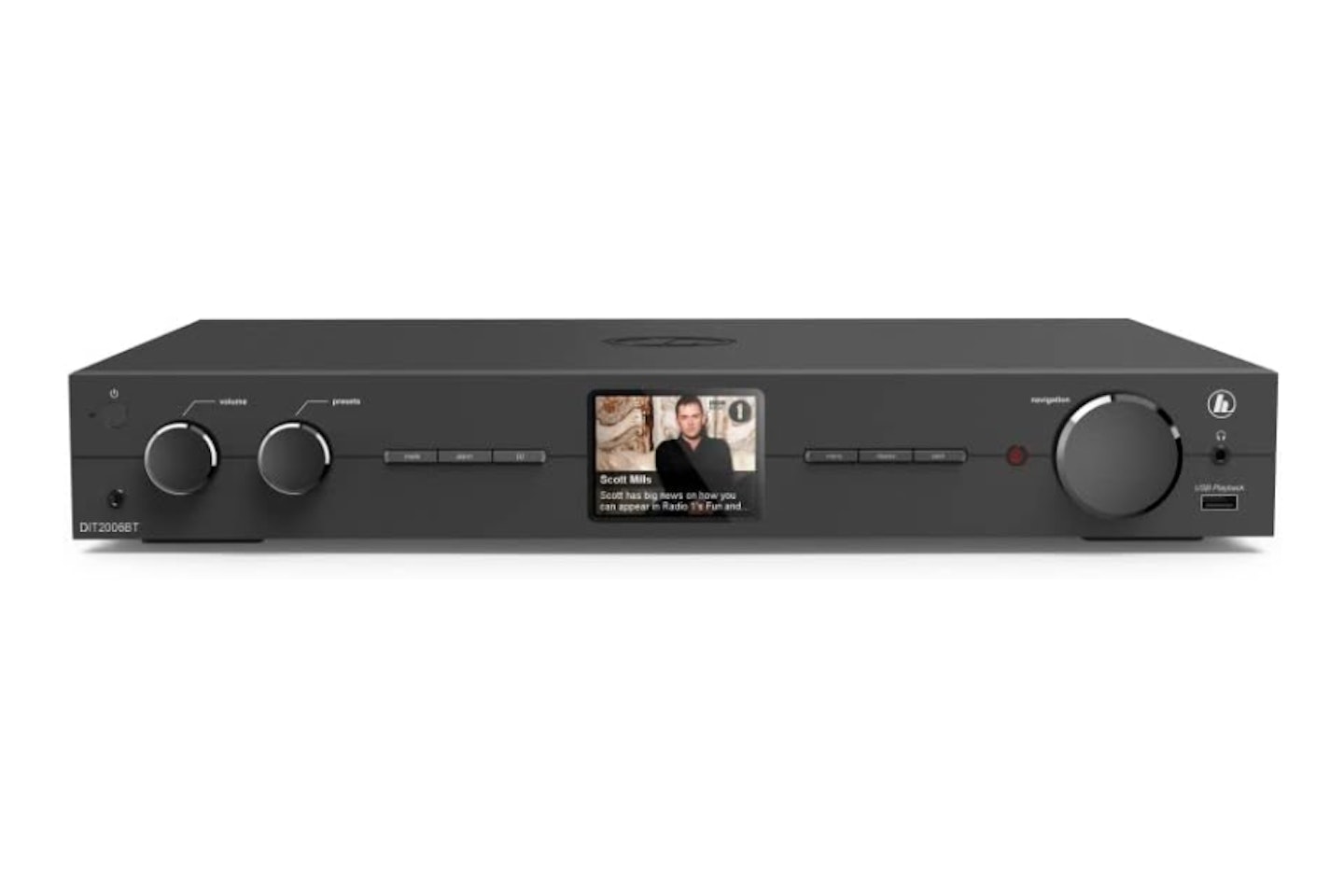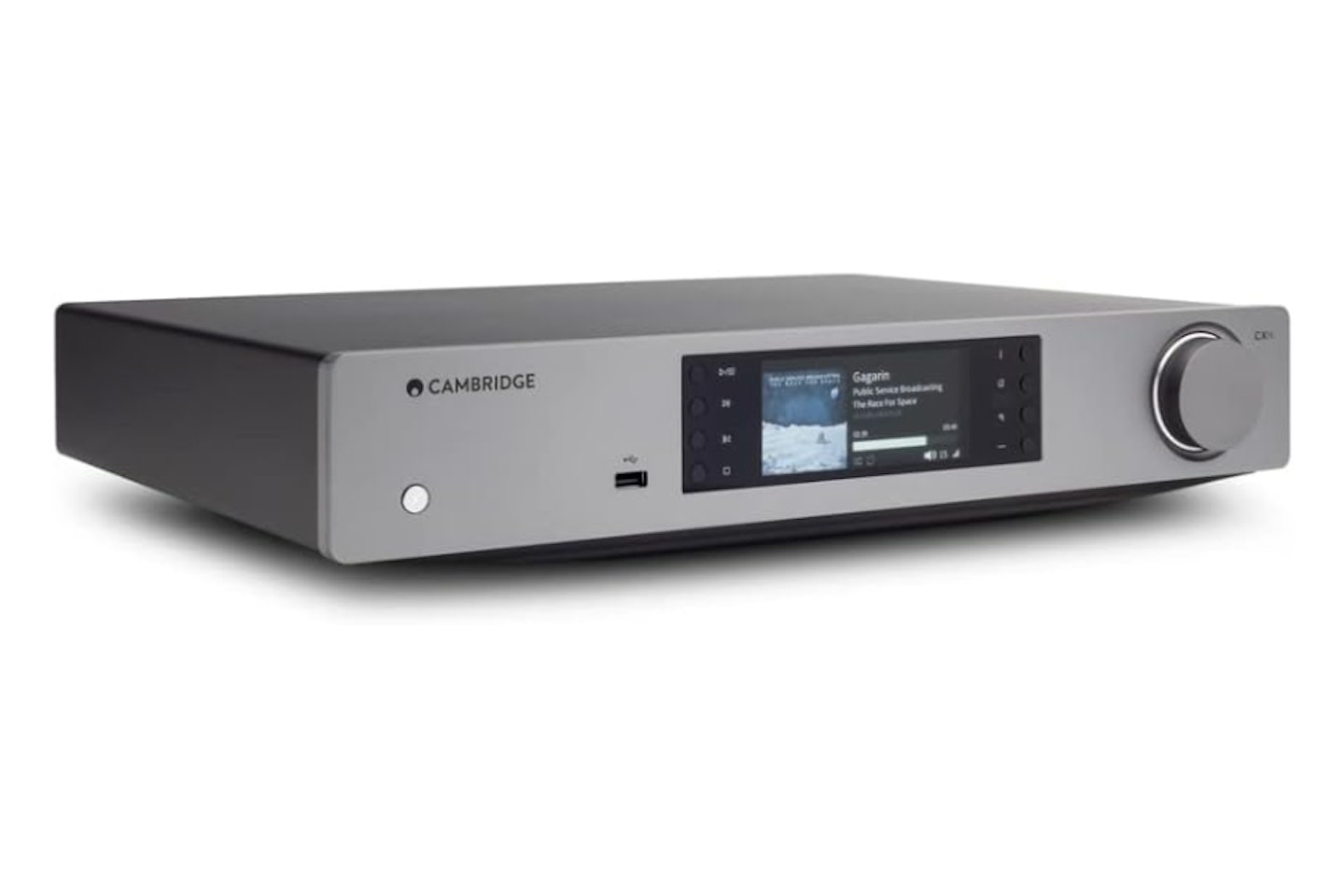Cambridge-based audio company, Majority, has made quite a name for itself over the last few years. Its less compact music players often integrate some of the best speakers to be found in smaller audio devices. With a range spanning headphones, mics and compact music systems, Majority repeatedly strikes that elusive balance of solid build, good looks and affordability. The Majority Fitzwilliam 3 internet radio, however, is aimed squarely at the hi-fi separates market. But can it possibly improve on the previous version?
Our Tech Product Writer Chris Duffill has pushed his Fitzwilliam 2 aside for a few weeks to put Majority's newest version of its globetrotting internet radio through its paces. Taking its cues from smart speakers, the Majority Fitzwilliam 3 is more than just a radio - it's positioned itself as a hub for all wireless audio. So, did the FW3 earn its place in the stack? Or, did the mk2 make a shock comeback? Read on.
Pros
- Design improvements over the Fitzwilliam 2
- DAB+ for more digital radio stations
- Responsive and quick to tune in
- Includes FM, DAB+, internet radio, Bluetooth and USB playback
- Spotify Connect support
- Clear colour display for artwork and data
- Auxillary input and a range of output connections
- Remote control
- Mobile device control possible via UNDOK app
Cons
- Exploring internet radio stations could be a little simpler
- Rack mounting or inside tight AV cabinets could be a problem for the DAB/FM aerial
Performance
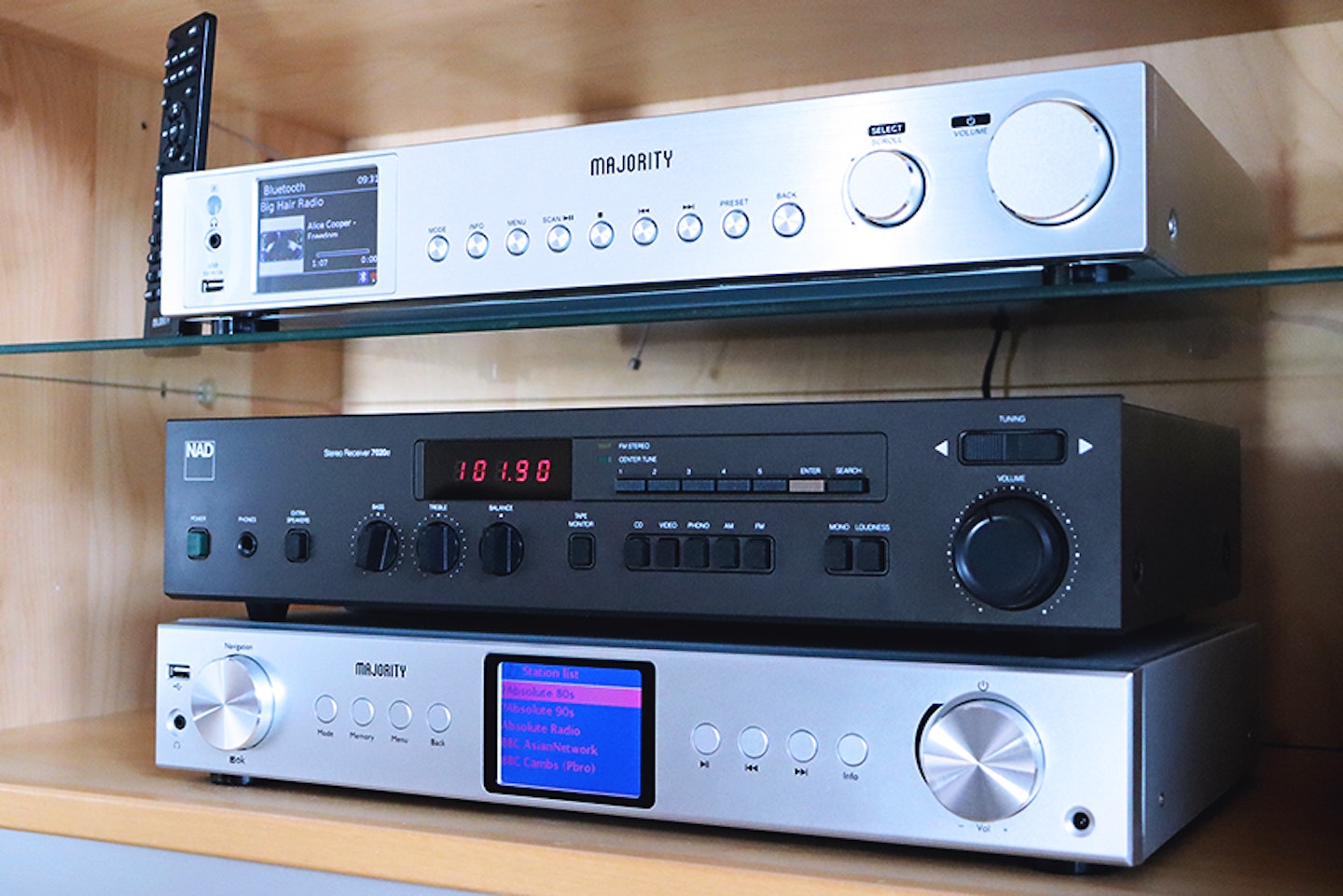
Setting up
The moment I plugged this in it helpfully entered setup mode, and within minutes I had it connected to my home network. I immediately noticed that the boot time and general responsiveness seems a little faster and sharper than the previous model. I especially appreciate the updated screen. It's less prone to reflections than the FW2, and the colour scheme is also easier on the eye.
Brimming with the spirit of adventure, I skipped setting up anything else and set a direct course for the wide-open waters of Internet radio. Thankfully avoiding the pitfalls of many an updated gadget, the intuitive menu system has been retained. It's super-easy to find yourself browsing various countries' radio content in no time. Yes, you'll find the odd station that's dropped its broadcast for whatever reason - but those are few and far between and not totally unexpected given there are over 25,000 stations on offer.
Finding some truly great stations - for me, that's Planet Rock and the lesser-known Big Hair Radio from Binghamton, New York - I set them as presets. That's as simple as a long press on the number key of the remote. Long-pressing the preset button on the front panel prompts you to select a numbered slot instead.
For some hi-fi enthusiasts, 'EQ' is a bit of a dirty word. But I think being able to alter the sound profile to suit the amp, hi-fi speakers (and my ears) is essential. A simple press of the EQ button gives a range of genre presets and the ability to set your own. I upped the bass a little and left it there. As for the quality of any internal DAC (Digital to Analogue Converter), that's not on the spec. Seasoned audiophiles will probably want more data to chew on, but I found the sound to be warm enough via my NAD receiver.
One feature I particularly love is the screen and its raft of information. Not only do you get album artwork at an appreciable resolution, but a press of the Info button will give you track names, bitrate and more. Not to mention the useful wifi and DAB signal strength icons.
DAB, FM, Spotify and podcasts
On the subject of DAB, I reluctantly dragged myself away from the internet radio mode and selected Digital Audio Broadcasting. Another step up on this model is DAB+, which gives you more available stations. Extending the aerial was a definite requirement for a stable DAB signal, but it could scan and find plenty. Other than the usual variable signal strengths you get with DAB, this made for good listening too.
FM reception was next, and I listened to Classic FM first. Majority has added a really useful feature here - mono mode. For anyone new to the limitations of FM: For stereo sound, the signal bandwidth is much wider than for mono. While separating left and right channels is technically better, that extra radio bandwidth generates more noise. Hitting the mono button on a hissy FM rendition of Beethoven's Piano Concerto No.5 instantly cleared up the sound, especially listening via wired headphones.
Turning to Spotify, I hooked my Premium account up to the FW3 via Spotify Connect. It was an absolute breeze - a couple of taps in the app and my playlists were available on the Fitzwilliam. Being Spotify Connect, it's not dependent on the device you use to set it up. So, you can turn off your iPhone and stream your Spotify tunes the way you want to.
Lastly, to round up my experience with the Majority Fitzwilliam 3, I tested Podcast mode for spoken-word content; I also attached a small USB drive to test mp3 playback. Bluetooth connected to my iPhone reliably, and I was able to stream my music to the FW3 just fine - refreshingly simple, and no separate Bluetooth receiver required. That said, these modes aren't exactly my bag when it comes to listening, but they all worked as expected and performed just as well as every other mode.
Build

Compared to the Fitzwilliam 2, the new unit is clearly a different beast. Although it has the same footprint, obviously a requirement to fit into an existing separate stack, there's no confusing them. I immediately noticed the updated finish. I opted for silver, like my mk2, but this one has a subtly convincing brushed-steel finish to the fascia. Secondly, and perhaps the most important overhaul, is the layout of the screen and controls.
The design of the Fitzwilliam 2 is influenced by vintage amplifier layouts. The mode dial and the volume dial are the same size, placed on either side of the screen. I'd often absent-mindedly reach for the mode dial instead of the volume and vice versa. Thankfully that symmetry is gone on the Fitzwilliam 3; The mode dial has been scaled down and placed next to the volume control.
Buttons are pleasing to look at and use too, with a circular brushed-steel texture. I like the logical ordering of them too, with mode and info controls closest to the screen. Talking of the display, its placement is more pleasing, and the TFT display is visibly clearer that the previous version. The screen appears a little closer to the surface, and the perspex covering it is far less prone to reflections. I also prefer the default colour scheme for text over the pale orange of its predecessor.
The metal chassis of this hi-fi separate is reassuringly solid, with no unnecessary flexing; and the connections on the back are equally secure. One thing you'll notice, especially if you're used to old-school hi-fi, is how incredibly light this unit is. Now, in old money, this would ring alarm bells. But remember: This isn't a hi-fi amplifier or receiver - it has the latest miniaturised smart tech inside. There are no moving parts, no heavy transformers, and no giant circuit boards. It has a simpler job to do: receive music wirelessly and send it to an amp for the heavy lifting. And it does all of that brilliantly.
Any downsides?
When it comes to providing a reliable audio feed- the Majority Fitzwilliam 3 honestly hits the target without flinching. I found it to be reliable and responsive to use and very easy to set up. But, there are a couple of nitpicks here. Spotify Connect is excellent, but I would have liked to have seen integration with other popular music streaming features such as AirPlay 2 and Tidal. Then again, you can pay a lot more for a similar device with those features but very few more.
If you're thinking of mounting this in a rack (or hi-fi cabinet) with restricted space, you absolutely can. But bear in mind that for solid DAB and FM reception, you'll need to fully extend the aerial. If that's you, you'll need to run a flexible aerial extension.
The concept of browsing through the world's radio stations is irresistible. When I bought the Fitzwilliam 2 I wanted to cycle through the stations another country has to offer. You can press the last/next buttons to skip stations or tracks on a paired Bluetooth device; But, you can't skip to the next internet radio station the same way. For instance, selecting United States, Chicago, does bring up a list - but then you have to press twice to listen. If you want the next station you have to back all the way out and select the next station down. I'd love to be able to press one button and explore listed stations more seamlessly.
That said, it's not a deal-breaker. I still found I could explore to my heart's content. By setting the ones I liked to my presets list, I could then use one button to cycle through them. Thankfully, there's a separate presets list for each source as well. A happy end to the story after all - even if it's not exactly what I wanted from the FW3.

Price and competition
One area where Majority excel is positioning its products to convincingly compete with gear that's twice the price or more. Given how reliable the Majority Fitzwilliam 3 is, choosing a model from another brand is all about cosmetics, DACs and UI preferences. Yes, you'll find music players with all-metal fascias and gold-plated this and that - great if you're building a serious audiophile system - but they'll cost you a pretty penny.
If you're looking for an alternative to the Fitzwilliam 3, one contender is the Hama Tuner Hi-Fi Radio Internet Radio. At around £60 more than the FW3 I think it's hard to justify the extra spend. If you have the cash to splash then Cambridge Audio's CXN is a high-end option with serious internal DACs and a few more bells and whistles.
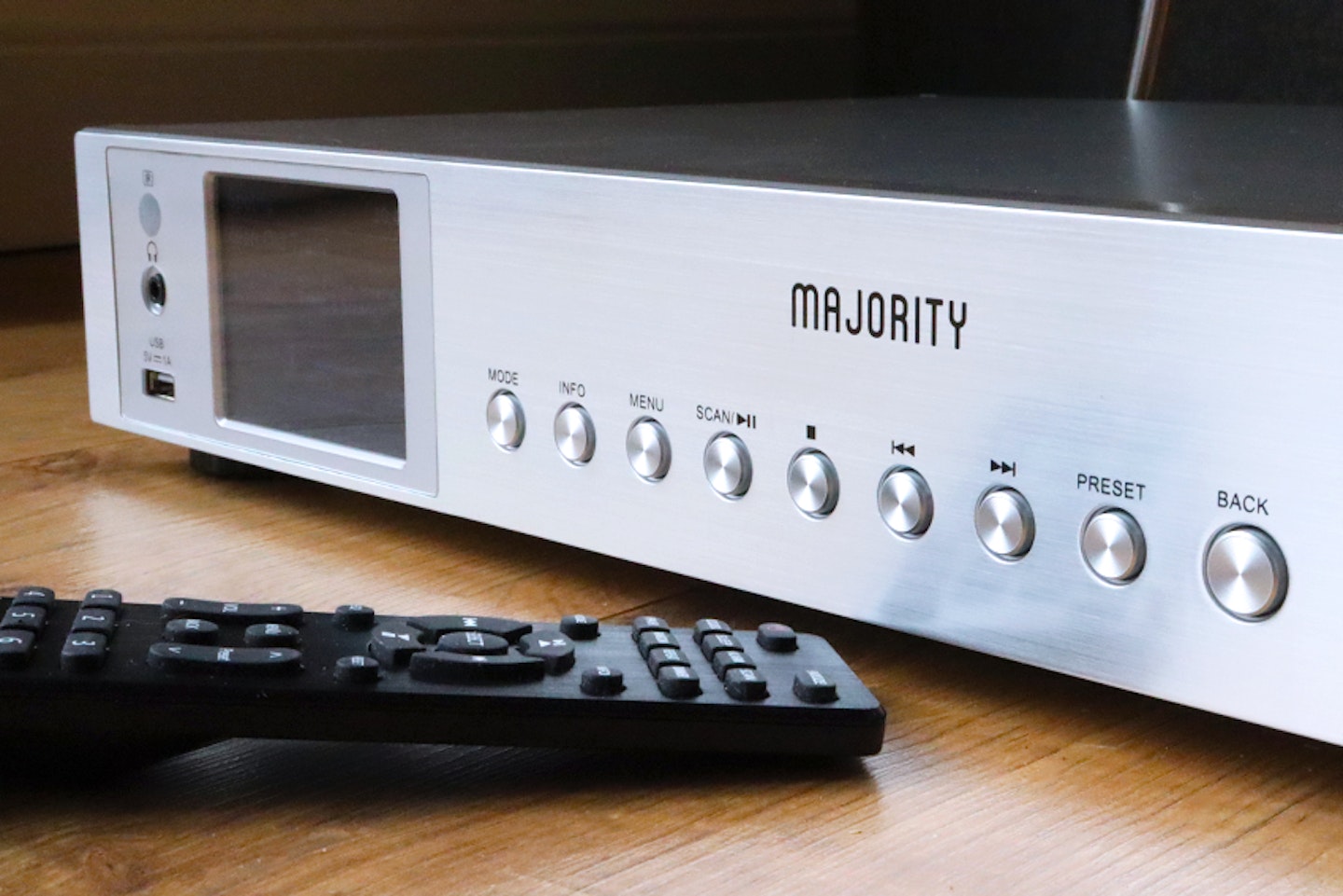
Verdict
I confess to the tiniest twinge of guilt as I pulled the phono cables from the back of my Fitzwilliam 2. It had been my introduction to the wonderful wide world of internet radio. I'd discovered new musical sub-genres from intriguing countries. Replacing it with this bold newcomer felt a little, well... ungrateful. But the Majority Fitzwilliam 3 was far from being a simple re-vamp of the mk2. The design and cosmetic improvements really update the unit and solve some of the usability issues of its predecessor. Boot time and performance were snappier too. I was able to set this up and start enjoying wireless music from multiple sources within minutes - and I didn't even use the manual. What more do you need when adding a player like this to your stack of separates? It's more impressive than the price would have you believe.
Pros
- Design improvements over the Fitzwilliam 2
- DAB+ for more digital radio stations
- Responsive and quick to tune in
- Includes FM, DAB+, internet radio, Bluetooth and USB playback
- Spotify Connect support
- Clear colour display for artwork and data
- Headphone jack
- Auxillary input and a range of output connections
- Remote control
Cons
- Exploring internet radio stations could be a little simpler
- Rack mounting or inside tight AV cabinets could be a problem for the DAB/FM aerial
More items to consider
A close contender to the FW3, this model from Hama ticks many of the same boxes. It has almost the same number of internet radio stations on offer and the general design and layout are very similar to that of the FW2.
Pros
- DAB+
- FM radio
- Over 20,000 Internet radio stations
- Plenty of inputs
- App control via UNDOK
- Alarm clock
Cons
- Fewer stations than the FW3
This isn't so much a close competitor to the Fitzwilliam 3 as it's five times the price, but for anyone who has the cash and wants the same functionality with more integrations with streaming services like Tidal and Qobuz, plus some seriously audiophile-level DACs for the smoothest digital to analogue sound, this is it.
Pros
- Huge range of supported music sources
- Dedicated StreamMagic app
- Roon ready
- Dual DACs
- FM included
- High-end build quality
- More inputs than you can use
Cons
- Complex to setup and configure for some
Who tested it?
Chris Duffill is our Tech Product Writer. When not listening to blues, rock and metal on vinyl, he’s probably making some sort of electronic gizmo from parts. With experience in video and digital media production, he's a detail-obsessed fan of entertainment, hardware, software and the latest tech.
How this product was tested
I tested the Majority Fitzwilliam 3 for just under three weeks and connected it via phono connection to a NAD receiver with NAD bookshelf speakers. I listened to every source, with internet radio stations seeing the most usage for several hours a day. Spotify Connect was the next most-used source, with FM and USB playback used for brief periods. Spoken-word sources were tested via the Podcast player. Bluetooth connectivity was tested with an iPhone and iPad.
Chris Duffill is a Tech Product Writer for What's The Best. He specialises in audiovisual, computing, and gadgets. He also writes for Yours.
Subscribe to the What’s The Best Newsletter to keep up to date with more of the latest reviews and recommendations from the rest of the What’s The Best team.

